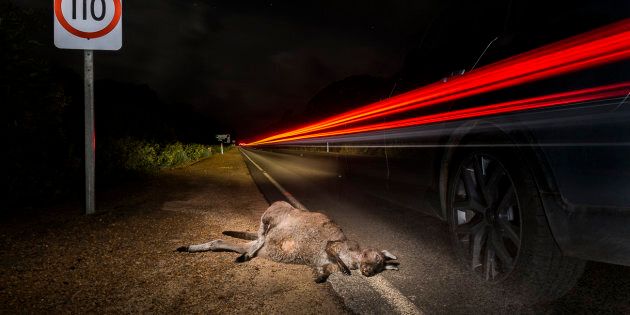
Calls are growing for variable speed limits on Kangaroo Island in wildlife hotspots on Kangaroo Island in order to protect native wildlife and prevent collisions.
If implemented, the speed limit would be reduced in these locations during dusk and dawn, when visibility on the roads is decreased and animals tend to be more active.
Similar restrictions have already been implemented in parts of Tasmania and Victoria.
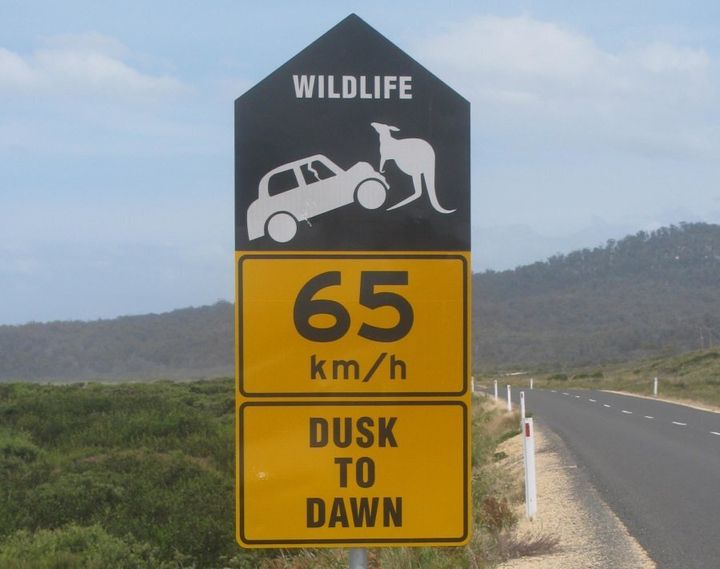
The majority of crashes on the island occur on roads with a speed limit of 100km/h. Recent studies from the Centre for Automotive Safety Research at the University of Adelaide have shown that a reduction in speed of just 10 percent has the potential to reduce vehicle crashes by 20 percent.
Conservation Photographer, Doug Gimesy, became a vocal proponent of introducing the restrictions, after visiting the island with his partner during a holiday.
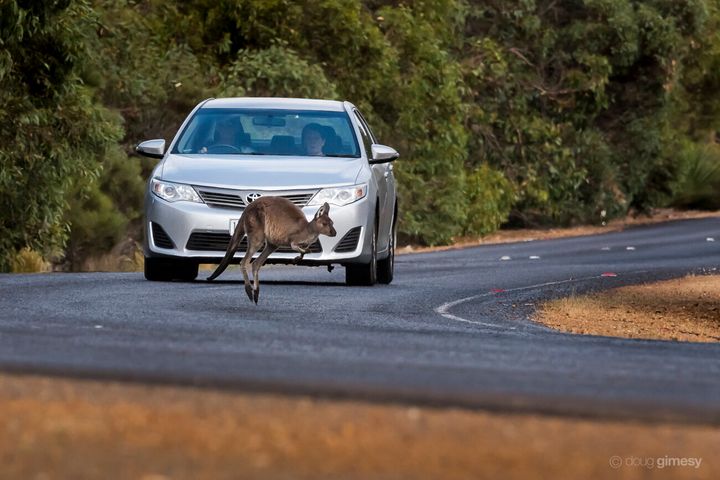
"I was shocked by the amount of dead animals on the side of the road," he told The Huffington Post Australia.
"One evening driving back to where we were staying, we saw a kangaroo by the side of the road. We did a U-Turn, turned around and as we got closer and closer it didn't move...we then noticed its leg was broken and pointing in the other direction, it had clearly been struck by a car.
"It occurred to me then that, of all the wildlife I'd seen, a lot of them don't die straight away...[and] it's not just the death, it's the slow trauma."
If Tasmania can do it, why can't we do it? Any way that I could find to get people to slow down, I would use.
Gimesy's experience inspired him to re-visit the island to take a series of conservation photographs in the hope that it would raise awareness and hopefully place pressure on the South Australian government to implement speed limit changes.
"My goal is to really start a conversation," Gimesy said.
"I'm not picking on Kangaroo Island in particular, because it happens all around Australia."
Sandy Carey, a dedicated wildlife conservationist, has lived on Kangaroo Island for close to 40 years and has been hand rearing orphaned joeys for 20 of them.
She has also spent much of her time tirelessly lobbying for the implementation of speed restrictions.
"I can't see why there couldn't be some sort of reduction made," Carey told HuffPost Australia.
"If Tasmania can do it, why can't we do it? Any way that I could find to get people to slow down, I would use."
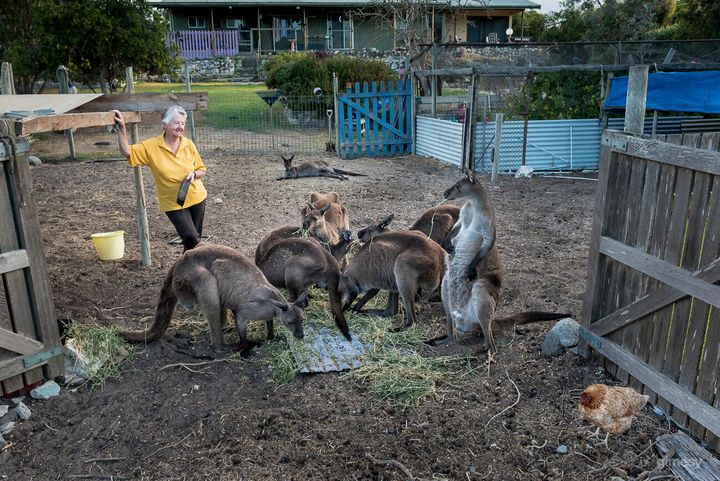
In the past, Carey has made her own signs to warn both residents and tourists that flock to the island about the dangers that can be encountered while travelling at high speeds on roads that run through kangaroo hot spots.
Often people who hit a kangaroo with their car will leave it by the roadside. It is dedicated volunteers like Carey who respond to the unpleasant situation.
More often than not, the trauma suffered is not something that one can easily recover from.
"Australians are blasé, 'we've got hundreds, millions of kangaroos', they say, but every kangaroo I know that I hand rear is important," she said.
It's really traumatic -- the trauma goes beyond the animal and to the people, it extends beyond the initial impact.
"Every one that you have to put down does affect you, because the kangaroos call and talk to you -- they have clicking sounds -- they're under stress and it's not a nice thing to see."
In one particular incident, Carey responded to a female kangaroo that had been struck by a car. Its joey had been flung from its mothers pouch and was dead. The mother -- badly injured but still alive -- had to be euthanised by Carey.
"It upset me immensely, it wasn't just one we lost, it was two," she said.
"I know [I get emotionally involved] but every animal is important...you think about it for ages and ages afterwards. It still affects me to this day."
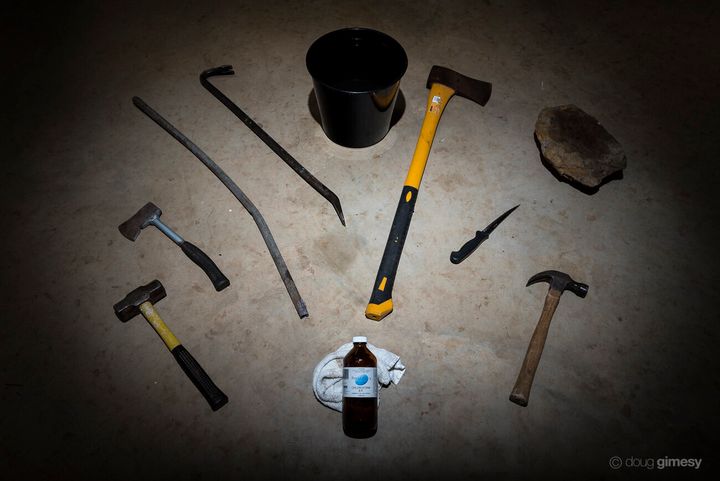
During his photography expedition on the island, Gimesy said that he had met volunteers who had suffered through the trauma of having to euthanise badly injured kangaroos themselves.
As they are often without adequate equipment, they have to resort to using rudimentary implements.
For example, in one instance a man carried chloroform with him and would use it to anaesthetise an injured kangaroo before drowning it in a bucket of water. In others, people resorted to a tire iron or rock found by the roadside.
"National Parks on Kangaroo Island are fantastic and will come out and euthanise it, but it can sometimes take a few hours to get to the animal, and sometimes they can't get to them," Gimesy said.
If we can make one person think about slowing down to save wildlife then I think we've done our job.
"It's really traumatic -- the trauma goes beyond the animal and to the people, it extends beyond the initial impact."
For Ben Buchanan, chairman of the WILD LIFE Conservation Fund, implementing restrictions is a no-brainer in reducing collisions between cars and native wildlife, not just on Kangaroo Island but across Australia.
"Unfortunately our native wildlife has little road sense and many thousands are killed every year," Buchanan told HuffPost Australia.
"One of the largest road threats in Australia is to one of our most endangered and iconic animals -- the cassowary. There are only around 1500 birds left in the wild, so every individual is valuable to the population and survival of the species.
For Carey, perseverance is the key to having restrictions implemented on Kangaroo Island.
"It would be a pipe dream to get a speed limit on the entire island -- you would get a lot of opposition from people that want to get from A to B fast, it wouldn't be an easy thing -- but Tasmania has done it and they're bigger than us," she said.
"One of these days I'll ring Tasmania and find out how they did it and get stuck into them.
"If we can make one person think about slowing down to save wildlife then I think we've done our job."